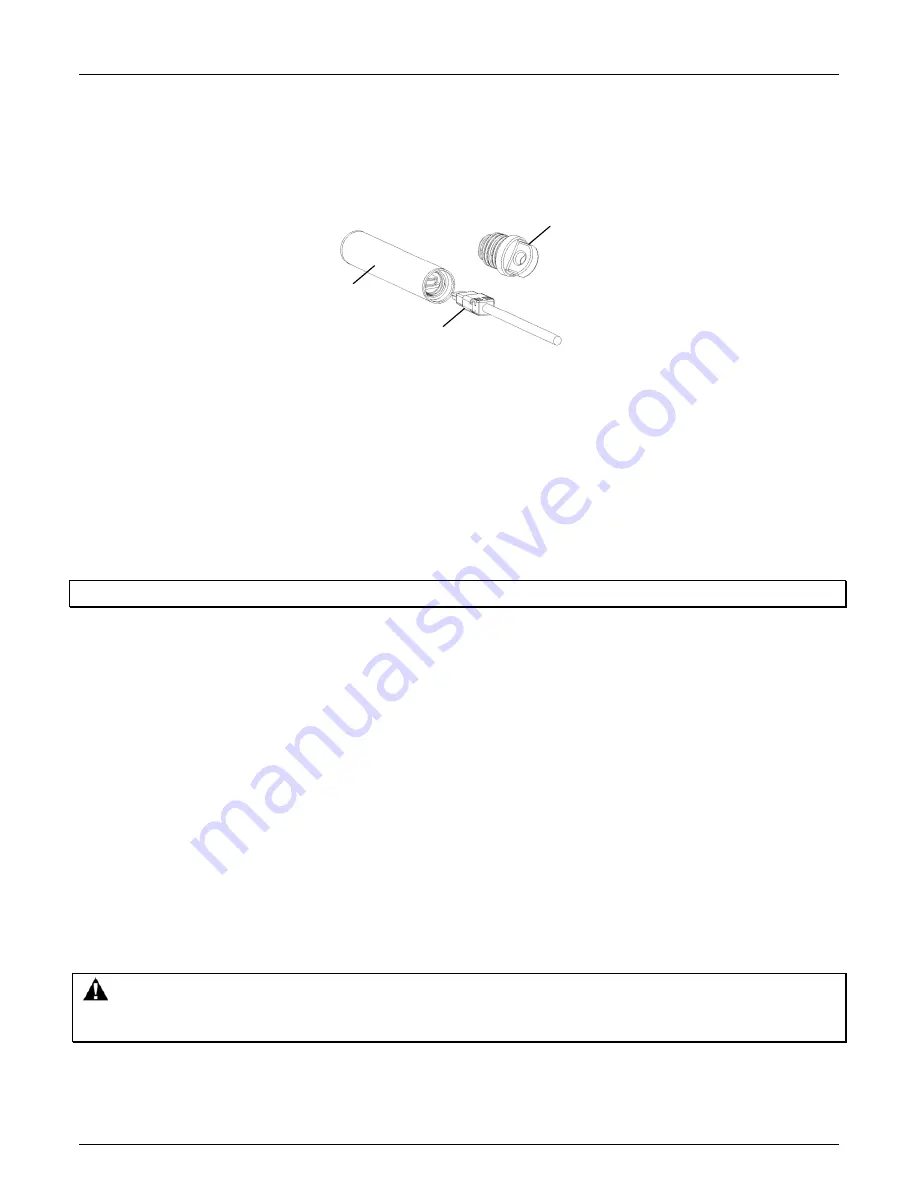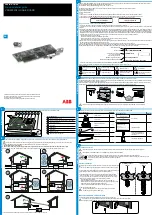
HOBO U12 Deep Ocean Temperature Logger Manual
1-800-LOGGERS 2
www.onsetcomp.com
Connecting the Logger
To launch or read out the logger, use the USB cable supplied with HOBOware to connect to the computer.
1. Remove the titanium end-cap from the logger by turning it counter-clockwise. If the cap is difficult to turn, place the stem of a small
screwdriver through the hole in the end-cap for better leverage.
2. Plug the large end of the cable into a USB port on the computer, and the small end into the logger as shown in the following diagram.
3.
If the logger has never been connected to the computer before, it may take a few seconds for the new hardware to be detected.
4.
Open HOBOware and click the Launch icon on the toolbar to set up the logger. Refer to the HOBOware Help for additional details on
launching.
5.
After the logger has started logging, you can read it out while it continues to log, stop it manually with the software, or let it record
data until the memory is full. Refer to the HOBOware Help for more details.
6.
After the logger is disconnected, reinstall the end-cap. To install the end-cap, press it in until it snaps in place with only the second set
of O-rings showing, and then screw the end-cap into the logger housing. The end-cap must be securely in place with no visible gap
between the housing and the end-cap.
Note:
Before opening the end-cap for read out, make sure that the logger is clean and dry. The logger should always be capped when it is
not connected to a computer.
Important:
USB communications may not function properly at temperatures below 0°C (32°F) or above 50°C (122°F).
Sample and Internal Event Logging
The logger can record two types of data: samples and internal events. Samples are the sensor measurements recorded at each logging
interval (for example, the temperature every minute). Internal events are independent occurrences triggered by a logger activity.
Examples of events recorded asynchronously during deployment include when the logger is connected to the host, when the battery is
low, and the end of a datafile once the logger is stopped. The logger stores 64K of data, and can record up to 43,000 samples.
Mounting
Use the 6.4 mm (0.25 in.) diameter hole in the end-cap to secure the logger to an object.
Battery Information
Expected battery life varies based on the temperature and the frequency at which the logger is recording data (the logging interval). With
no more than 60 minutes of operation at 125°C (257°F) per day, a new battery will typically last approximately three years with logging
intervals greater than one minute. Deployments in extremely cold or hot temperatures or logging intervals faster than one minute will
significantly reduce battery life.
The logger has the ability to report and log its own battery voltage. If the battery falls below 3.1 V, the logger will record a “bad battery”
event in the datafile. If the datafile contains “bad battery” events, or if logged battery voltage repeatedly falls below 3.3 V, the battery is
failing and the logger should be returned to Onset for battery replacement.
Do not attempt to replace the battery. If the battery needs to be replaced, contact Onset or an Onset Authorized Dealer for factory
replacement battery service.
WARNING:
Do not cut open, incinerate, heat above 150°C (302°F), or recharge the lithium battery. The battery may explode if the
logger is exposed to extreme heat or conditions that could damage or destroy the battery case. Do not dispose of the logger or battery in
fire. Do not expose the contents of the battery to water. Dispose of the battery according to local regulations for lithium batteries.
Care and maintenance of the logger
The logger can be permanently damaged by internal corrosion from condensation or foreign matter entering the case. The logger is
shipped with installed Resilon™ O-rings and backup rings. The logger electronics depend on the integrity of the O-ring/backup ring seal
End-cap
Logger
USB Cable





















